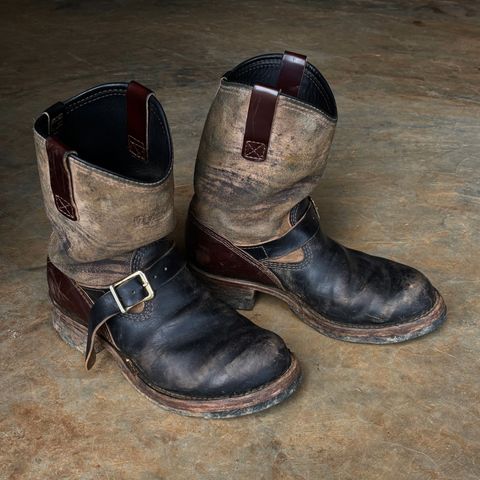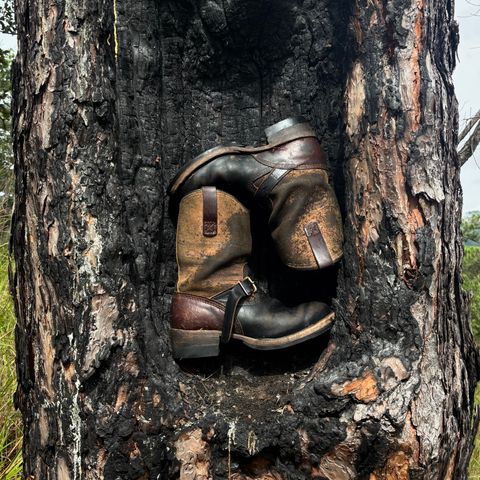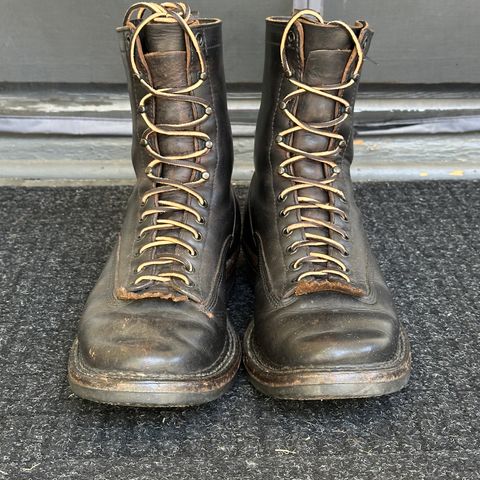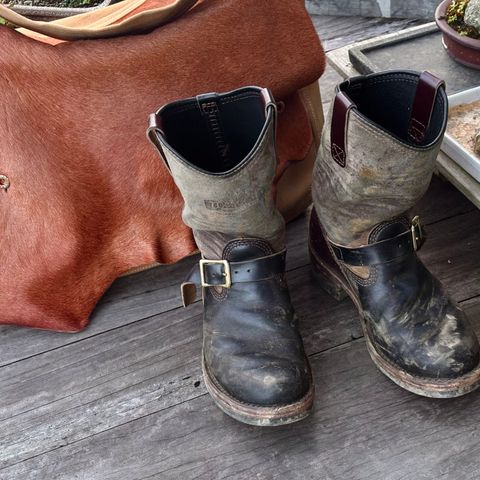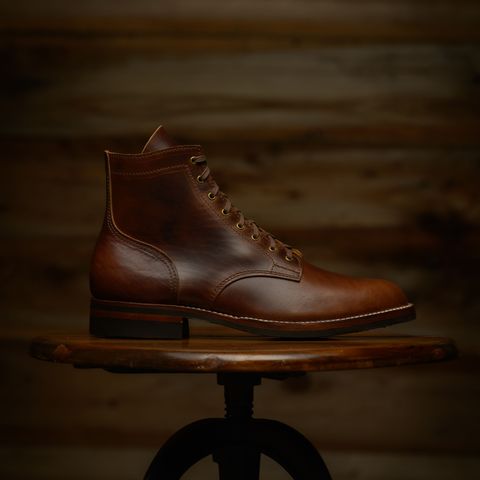About
Horween Chromexcel Horsehide is a premium oil-tanned leather produced by the Horween Leather Company of Chicago, Illinois. This distinctive leather represents a specialized variant of Horween's flagship Chromexcel leather, utilizing carefully selected horse hides instead of the more common cowhide base.
About
Horween Chromexcel Horsehide is a premium oil-tanned leather produced by the Horween Leather Company of Chicago, Illinois. This distinctive leather represents a specialized variant of Horween's flagship Chromexcel leather, utilizing carefully selected horse hides instead of the more common cowhide base.
Tanning Process
Horween Chromexcel Horsehide follows the company's traditional chromexcel tanning process, adapted for the unique properties of horsehide. The process begins with chrome tanning, which provides the leather's foundational strength and flexibility. Following the initial tanning, the hides undergo Horween's proprietary oil stuffing process, where multiple applications of oils and fats are worked deep into the leather's structure.
The oil stuffing process involves several stages of fat liquoring, using a blend of fish oils, beef tallow, and other natural compounds. This extensive oil treatment creates the leather's characteristic pull-up effect, where the oils redistribute when the leather is flexed or stressed, temporarily lightening the surface color and revealing the leather's natural grain pattern.
Characteristics
Horween Chromexcel Horsehide exhibits several distinctive characteristics that differentiate it from its cowhide counterpart:
Grain Structure: Horsehide naturally possesses a tighter, more compact grain structure compared to cowhide. This results in a smoother surface texture with finer grain patterns, contributing to the leather's refined appearance and enhanced durability.
Pull-up Effect: The extensive oil content creates a pronounced pull-up characteristic, where flexing or stretching the leather temporarily reveals lighter tones and grain definition. This effect is particularly dramatic in horsehide due to its tight grain structure.
Durability: The combination of chrome tanning and the inherent strength of horsehide creates an exceptionally durable leather. Horsehide fibers are naturally denser and stronger than cowhide, making the finished product highly resistant to wear and tear.
Water Resistance: The high oil content provides natural water resistance, though the leather remains breathable. This balance makes it particularly suitable for footwear and outdoor applications.
Color Development and Patina
Horween Chromexcel Horsehide develops a rich patina over time, with the aging process creating depth and character in the leather's appearance. The high oil content facilitates this development, as handling and wear redistribute the oils and gradually darken the leather. The tight grain structure of horsehide allows for more uniform patina development compared to cowhide variants.
Common colorways include natural tan, burgundy, black, and various brown tones. Each color develops differently over time, with natural and lighter tones showing the most dramatic transformation through use and aging.
Applications
Due to its exceptional durability and distinctive characteristics, Horween Chromexcel Horsehide is primarily used in premium applications:
Footwear: Heritage boot manufacturers and custom shoemakers frequently specify this leather for high-end work boots, dress shoes, and specialty footwear where durability and aging characteristics are prioritized.
Leather Goods: Premium wallets, belts, and bags benefit from the leather's strength and attractive aging properties. The smooth surface and fine grain make it suitable for refined leather goods.
Watch Straps: The leather's flexibility and water resistance make it popular for premium watch strap applications, particularly for vintage-style timepieces.
Comparison to Standard Chromexcel
While both leathers share the same basic tanning process, several factors distinguish horsehide from standard cowhide Chromexcel:
Grain tightness: Horsehide exhibits a finer, more compact grain
Strength: Superior tear and puncture resistance
Surface smoothness: Generally smoother texture with fewer natural markings
Aging characteristics: More uniform patina development
Availability: Limited supply makes horsehide variants less common and more expensive
Quality Assessment
High-quality Horween Chromexcel Horsehide should exhibit consistent thickness throughout, proper oil saturation evidenced by flexibility and pull-up characteristics, and minimal surface defects. The leather should feel supple but substantial, with good color uniformity and depth.
Historical Context
Horween's use of horsehide dates back to the company's early years in the 20th century, when horsehide was commonly used for various industrial and consumer applications. While horsehide usage declined mid-century due to changes in transportation and agriculture, specialty applications like premium footwear have maintained demand for this superior material.
The combination of Horween's chromexcel process with horsehide represents a continuation of traditional American leather craftsmanship, producing a material that exemplifies both historical techniques and contemporary quality standards.
See Also
References
Information compiled from Horween Leather Company technical documentation, industry sources, and manufacturer specifications. Historical context derived from leather industry publications and company archives.
